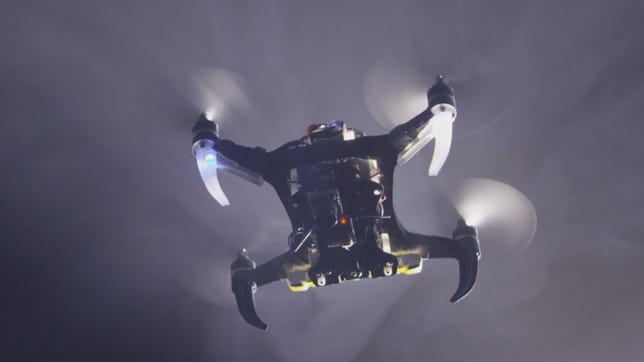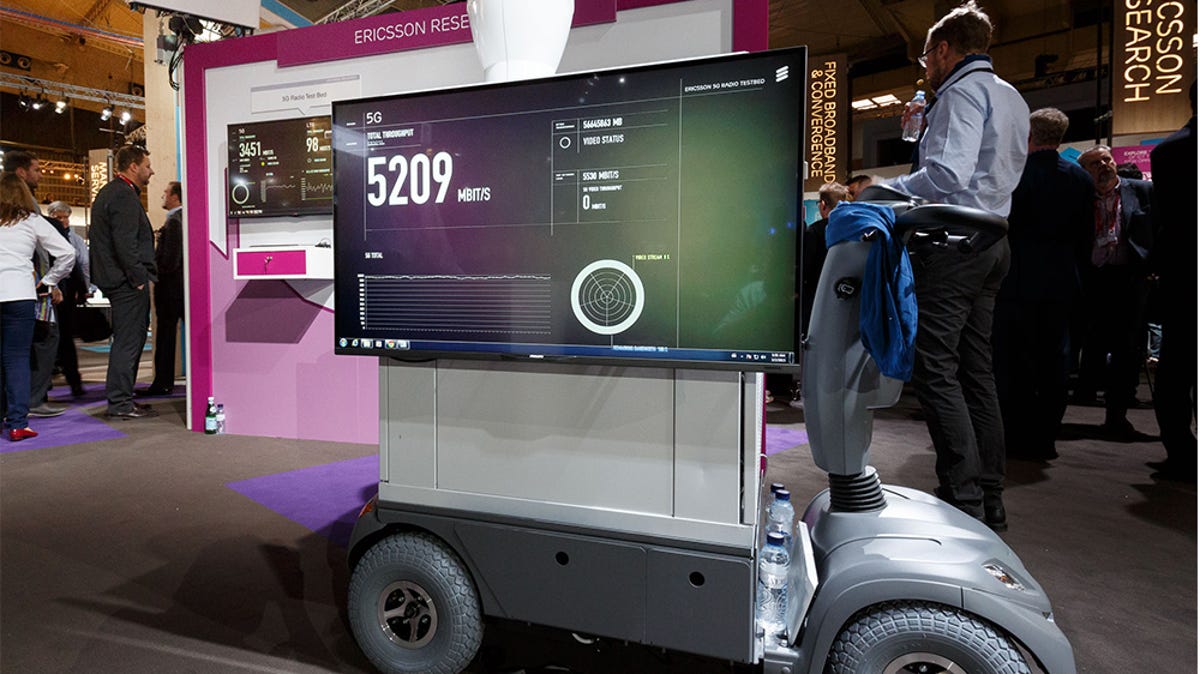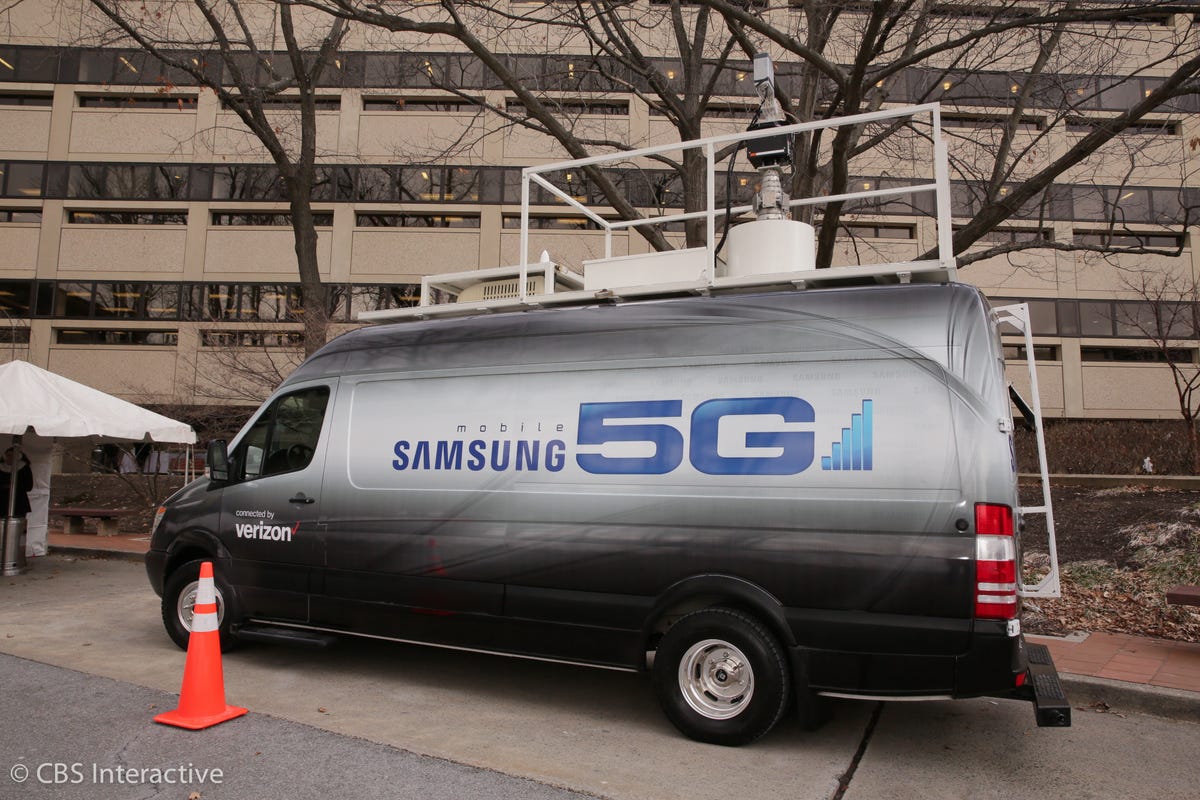Las Vegas is the city of splashy, neon-lit promises.
When the hype circus known as the CES trade show arrives in early January, well, things get even crazier. This is, after all, the show that last year brought you Samsung’s super-fridge.
So there’s no better place to talk about 5G, which is simultaneously the one of the most overhyped technologies today and a genuine next big thing.


Qualcomm is testing drones that communicate through 5G networks.
CNET
In case you don’t live and breathe all things mobile, 5G is the next or “fifth” generation of wireless technology. That “LTE” term you see on TV commercials and on your phone? That’s 4G.
5G’s supposed to be crazy fast — think downloading the entire collection of “The Simpsons” episodes in roughly the time it takes to watch one episode — plus responsive, dependable and virtually everywhere. It’s expected to serve as the foundation for other hot trends, from self-driving cars to the internet of things. As a result, you’ll likely hear people from across the tech industry talk about the benefits of 5G.
“It’s going to be a pretty big deal,” said Glenn Laxdal, head of Ericsson’s North American tech unit. “It’ll be the underlying technology of many of the things discussed at CES.”
But here’s the catch: It probably won’t really be here for another couple of years.
So why all the excitement? Verizon Wireless got the hype train rolling late last year when it said it would be the first to deploy field trials and commercially deploy 5G. AT&T followed suit, and it said earlier this month that it’s testing out 5G for a single business customer in Austin, Texas.
Showing the 5G love
Verizon will lie low in early 2017. It has traditionally skipped the glitz and glamour of CES aside from one year — a splashy press conference in 2011 to mark the full debut of its 4G LTE network. History could repeat itself again once its 5G network is mature enough for a meatier conversation.
Related stories
- Inside Verizon’s vision of smokin’ 5G speeds
- Verizon to be first to field-test crazy-fast 5G wireless
- 5G is here from AT&T, for one business customer
- T-Mobile’s 5G speed is mind-bogglingly faster than Verizon
That doesn’t mean other key players will stay quiet. AT&T will talk up 5G during its annual developer conference, which kicks off in Vegas at the start of CES.
Tom Keathley, senior vice president of wireless network architecture and design for AT&T, wouldn’t comment on the company’s specific plans at CES, but said it will play a big role at the trade show.
You’ll also hear more about the advancement of LTE as the foundation for 5G. (LTE, after all, stands for Long Term Evolution to 5G.)
5G will be the centerpiece of Qualcomm CEO Steve Mollenkopf’s keynote address at CES. He’ll make the case for its societal and economic benefits, and he’ll share the stage with leaders from other industries to showcase how 5G will affect areas outside mobile. His goal: start nudging 5G toward the mainstream.
It’s a mouthful, but here’s a theme you’ll hear from Mollenkopf: “5G as the unifying connectivity fabric for the next decade and beyond.”


A prototype 5G “phone” from last year found at the Ericsson booth. They’re quite a bit smaller now.
Stephen Shankland/CNET
Ericsson’s booth, meanwhile, will be wall-to-wall 5G as the network infrastructure company doubles down on next-generation wireless technology. You’ll see more than 30 demonstrations, including how media flows over these faster networks, how cities can get smarter and how a more responsive connection can help with the remote control of critical machinery.
At previous trade shows, Ericsson showed off a virtual-reality rig that allowed you to remotely control a giant excavator 1,550 miles away. Running on a 4G network, it was a little slow and there was a clear lag in responsiveness — 5G would eliminate those problems.
Education or hype?
Those demonstrations represent the ultimate vision for 5G, but they’re also pretty far away. The industry hasn’t even come to an agreement on what the standards look like — an optimistic forecast for that is in 2018.
Much of the talk about 5G has been on the idea of so-called fixed mobile broadband, or replacing the physical internet line that goes into your home.
That means a world in which you won’t have the cable guy punch holes in your walls to route a coaxial line into your living room.


Verizon has held field trials in its headquarters in Basking Ridge, New Jersey.
Sarah Tew/CNET
“You’ll see more information about the trials,” Keathley said. “You’ll see it evolve.”
Verizon said it would run similar trials in select cities early next year.
While a wireless broadband replacement sounds nice, that’s just the tip of the iceberg when it comes to the promise of 5G. The really cool stuff — the stuff we’ll hear about at CES — won’t arrive for another few years.
That’s something to keep in mind as we head to Vegas. It’s best not to get caught up in the circus.






